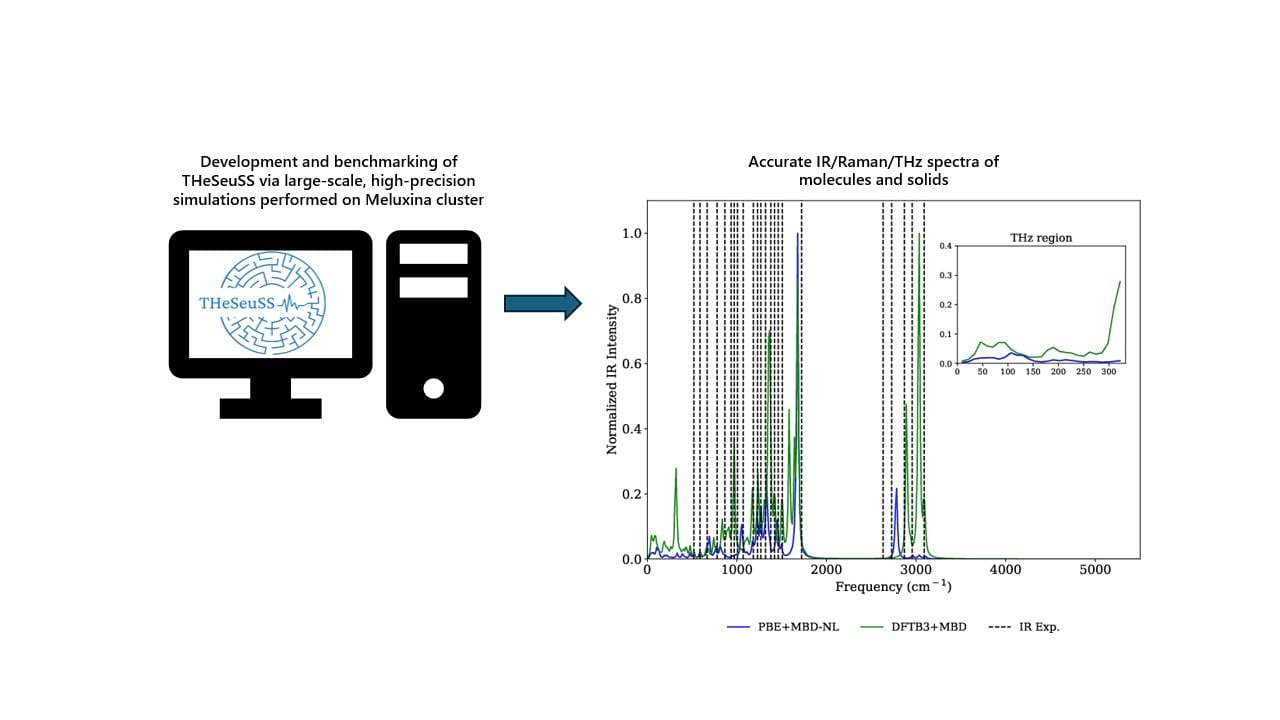
Vibrational spectra of solids and molecules
August 28, 2025. Vibrational spectroscopy provides molecular “fingerprints” that are essential for pharmaceutical, chemical, and material sciences. Traditionally, simulating and interpreting these spectra for large or complex systems has been both computationally demanding and technically challenging.
Ariadni Boziki and Alexandre Tkatchenko from the University of Luxembourg in collaboration with Frédéric Ngono Mebenga and Philippe Fernandes from Janssen Pharmaceutical Companies of Johnson & Johnson, developed THeSeuSS (THz Spectra Simulations Software), a Python-based platform that automates the simulation of IR and Raman vibrational spectra for molecules and solids.
THeSeuSS addresses theoretical vibrational spectroscopy challenges by combining automation, scalability, and accuracy:
- It integrates Density Functional Theory (DFT), Density Functional Tight Binding (DFTB), and a machine-learning force field (SO3LR) to cover systems from single molecules to extended crystals at different levels of theory.
- It automates workflows for geometry optimization, vibrational frequency calculation, and spectral generation.
- It uses advanced parallelization, enabling the calculation of vibrational spectra for large systems such as molecular crystals that are used as pharmaceutical drugs, with high accuracy.
- Benchmark studies demonstrate that THeSeuSS reproduces experimental IR, Raman, and THz spectra with excellent agreement, even for complex pharmaceutical systems such as solid ibuprofen.
By making high-accuracy simulations accessible for both small molecules and large-scale solids, THeSeuSS bridges the gap between computational feasibility and experimental reliability.
The Meluxina impact
The development and benchmarking of THeSeuSS required large-scale, high-precision simulations that are only feasible on advanced HPC systems. The Luxembourg national supercomputer MeluXina, enabled:
- Massively parallel computations of vibrational frequencies and spectra for large systems,
- Handling of thousands of atomic degrees of freedom in molecular crystals,
- Accurate reproduction of spectra for complex pharmaceutical compounds such as ibuprofen, where long-range molecular interactions are crucial.
Without HPC resources like MeluXina, achieving this combination of scalability and accuracy in simulating vibrational spectra would not have been possible.



